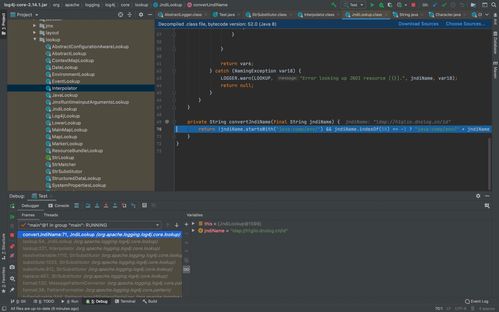log边缘检测算子matlab代码(matlab对图像做边缘检测代码)
admin 发布:2022-12-19 11:04 108
今天给各位分享log边缘检测算子matlab代码的知识,其中也会对matlab对图像做边缘检测代码进行解释,如果能碰巧解决你现在面临的问题,别忘了关注本站,现在开始吧!
本文目录一览:
- 1、在matlab软件中用拉普拉斯算子和canny算子进行边缘检测的程序
- 2、matlab canny算子边缘检测函数代码
- 3、求matlab图像边缘检测的三种算子的源代码
- 4、求数字图像处理边缘检测几种算子的matlab程序
- 5、求MATLAB代码
在matlab软件中用拉普拉斯算子和canny算子进行边缘检测的程序
i=imread('1.jpg'); 读入图像1
i1=rgb2gray(i); 把rgb图像转换成灰度图像
bw1=edge(i1,'log',0.07); 做阈值为0.07的高斯—拉普拉斯(Log)算法
figure(3),imshow(i); 显示原图
figure(4),imshow(bw1); 显示高斯—拉普拉斯(Log)边缘检测后的图
matlab canny算子边缘检测函数代码
I = imread('lena.bmp'); %%如果是其他类型图像,请先转换为灰度图
%%没有噪声时的检测结果
BW_sobel = edge(I,'sobel');
BW_prewitt = edge(I,'prewitt');
BW_roberts = edge(I,'roberts');
BW_laplace = edge(I,'log');
BW_canny = edge(I,'canny'); figure(1);
subplot(2,3,1),imshow(I),xlabel('原始图像');
subplot(2,3,2),imshow(BW_sobel),xlabel('sobel检测');
subplot(2,3,3),imshow(BW_prewitt),xlabel('prewitt检测');
subplot(2,3,4),imshow(BW_roberts),xlabel('roberts检测');
subplot(2,3,5),imshow(BW_laplace),xlabel('laplace检测');
subplot(2,3,6),imshow(BW_canny),xlabel('canny检测');
%%加入高斯噪声(μ=0,σ^2=0.01)检测结果
I_g1 = imnoise(I,'gaussian',0,0.01);
BW_sobel = edge(I_g1,'sobel');
BW_prewitt = edge(I_g1,'prewitt');
BW_roberts = edge(I_g1,'roberts');
BW_laplace = edge(I_g1,'log');
BW_canny = edge(I_g1,'canny'); figure(2);
subplot(2,3,1),imshow(I_g1),xlabel('加入高斯噪声(μ=0,σ^2=0.01)图像');
subplot(2,3,2),imshow(BW_sobel),xlabel('sobel检测');
subplot(2,3,3),imshow(BW_prewitt),xlabel('prewitt检测');
subplot(2,3,4),imshow(BW_roberts),xlabel('roberts检测');
subplot(2,3,5),imshow(BW_laplace),xlabel('laplace检测');
subplot(2,3,6),imshow(BW_canny),xlabel('canny检测');
%%加入高斯噪声(μ=0,σ^2=0.02)检测结果
I_g2 = imnoise(I,'gaussian',0,0.02);
BW_sobel = edge(I_g2,'sobel');
BW_prewitt = edge(I_g2,'prewitt');
BW_roberts = edge(I_g2,'roberts');
BW_laplace = edge(I_g2,'log');
BW_canny = edge(I_g2,'canny'); figure(3);
subplot(2,3,1),imshow(I_g2),xlabel('加入高斯噪声(μ=0,σ^2=0.02)图像');
subplot(2,3,2),imshow(BW_sobel),xlabel('sobel检测');
subplot(2,3,3),imshow(BW_prewitt),xlabel('prewitt检测');
subplot(2,3,4),imshow(BW_roberts),xlabel('roberts检测');
subplot(2,3,5),imshow(BW_laplace),xlabel('laplace检测');
subplot(2,3,6),imshow(BW_canny),xlabel('c
一、没有噪声时的检测结果 1 原始图像
2 Sobel算子边缘检测 3 Prewitt算子边缘检测 4 Roberts算子边缘检测 5 Laplace算子边缘检测 6 Canny算子边缘检测
二、加入高斯噪声(μ=0,σ^2=0.01)检测结果 1 原始图像
2 Sobel算子边缘检测 3 Prewitt算子边缘检测 4 Roberts算子边缘检测 5 Laplace算子边缘检测 6 Canny算子边缘检测
三、加入高斯噪声(μ=0,σ^2=0.02)检测结果 1 原始图像
2 Sobel算子边缘检测 3 Prewitt算子边缘检测 4 Roberts算子边缘检测 5 Laplace算子边缘检测 6 Canny算子边缘检测
clear all; close all;
warning off all;

求matlab图像边缘检测的三种算子的源代码
edit edge看edge.m的源代码阿
然后把这三个的提取出来,改改不就行了
matlab有现成的函数edge
比如roberts梯度
I=imread('你的图片');
[g,t]=edge(I,'roberts',0.1);
sobel算子
[g,t]=edge(I,'sobel',0.1);
laplacian算子
[g,t]=edge(I,'log',0.1);
求数字图像处理边缘检测几种算子的matlab程序
我写几个吧,你最好还是找书,书上边缘处理程序很多
边缘检测一般有几步:
1、滤波
2、增强
3、检测
Roberts算子,Sobel算子,Prewitt算子,Canny算子,Log算子
实例:
i=imread('tupian.jpg');
i1=rgb2gray(i);
bw1=edge(i1,'prewitt',0.04);%也可把prewitt换成canny,log,sobel等。阈值为0.04,可改
figure(1),imshow(i);%原图
figure(2),imshow(i1);%灰度图
figure(3),imshow(bw1);%prewitt边缘提取的图像
求MATLAB代码
MATLAB实用源代码
1图像的读取及旋转
A=imread('');%读取图像
subplot(2,2,1),imshow(A),title('原始图像');%输出图像
I=rgb2gray(A);
subplot(2,2,2),imshow(A),title('灰度图像');
subplot(2,2,3),imhist(I),title('灰度图像直方图');%输出原图直方图
theta = 30;J = imrotate(I,theta);% Try varying the angle, theta.
subplot(2,2,4), imshow(J),title(‘旋转图像’)
2边缘检测
I=imread('C:\Users\HP\Desktop\平时总结\路飞.jpg');
subplot(2,2,1),imshow(I),title('原始图像');
I1=edge(I,'sobel');
subplot(2,2,2),imshow(I1),title('sobel边缘检测');
I2=edge(I,'prewitt');
subplot(2,2,3),imshow(I2),title('prewitt边缘检测');
I3=edge(I,'log');
subplot(2,2,4),imshow(I3),title('log边缘检测');
3图像反转
MATLAB 程序实现如下:
I=imread('xian.bmp');
J=double(I);
J=-J+(256-1);%图像反转线性变换
H=uint8(J);
subplot(1,2,1),imshow(I);
subplot(1,2,2),imshow(H);
4.灰度线性变换
MATLAB 程序实现如下:
I=imread('xian.bmp');
subplot(2,2,1),imshow(I);
title('原始图像');
axis([50,250,50,200]);
axis on;%显示坐标系
I1=rgb2gray(I);
subplot(2,2,2),imshow(I1);
title('灰度图像');
axis([50,250,50,200]);
axis on; %显示坐标系
J=imadjust(I1,[0.1 0.5],[]); %局部拉伸,把[0.1 0.5]内的灰度拉伸为[0 1]
subplot(2,2,3),imshow(J);
title('线性变换图像[0.1 0.5]');
axis([50,250,50,200]);
grid on; %显示网格线
axis on; %显示坐标系
K=imadjust(I1,[0.3 0.7],[]); %局部拉伸,把[0.3 0.7]内的灰度拉伸为[0 1]
subplot(2,2,4),imshow(K);
title('线性变换图像[0.3 0.7]');
axis([50,250,50,200]);
grid on; %显示网格线
axis on; %显示坐标系
5.非线性变换
MATLAB 程序实现如下:
I=imread('xian.bmp');
I1=rgb2gray(I);
subplot(1,2,1),imshow(I1);
title(' 灰度图像');
axis([50,250,50,200]);
grid on;%显示网格线
axis on;%显示坐标系
J=double(I1);
J=40*(log(J+1));
H=uint8(J);
subplot(1,2,2),imshow(H);
title(' 对数变换图像');
axis([50,250,50,200]);
grid on; %显示网格线
axis on; %显示坐标系
4.直方图均衡化
MATLAB 程序实现如下:
I=imread('xian.bmp');
I=rgb2gray(I);
figure;
subplot(2,2,1);
imshow(I);
subplot(2,2,2);
imhist(I);
I1=histeq(I);
figure;
subplot(2,2,1);
imshow(I1);
subplot(2,2,2);
imhist(I1);
5. 线性平滑滤波器
用MATLAB实现领域平均法抑制噪声程序:
I=imread('xian.bmp');
subplot(231)
imshow(I)
title('原始图像')
I=rgb2gray(I);
I1=imnoise(I,'salt pepper',0.02);
subplot(232)
imshow(I1)
title(' 添加椒盐噪声的图像')
k1=filter2(fspecial('average',3),I1)/255; %进行3*3模板平滑滤波
k2=filter2(fspecial('average',5),I1)/255; %进行5*5模板平滑滤波k3=filter2(fspecial('average',7),I1)/255; %进行7*7模板平滑滤波
k4=filter2(fspecial('average',9),I1)/255; %进行9*9模板平滑滤波
subplot(233),imshow(k1);title('3*3 模板平滑滤波');
subplot(234),imshow(k2);title('5*5 模板平滑滤波');
subplot(235),imshow(k3);title('7*7 模板平滑滤波');
subplot(236),imshow(k4);title('9*9 模板平滑滤波');
6.中值滤波器
用MATLAB实现中值滤波程序如下:
I=imread('xian.bmp');
I=rgb2gray(I);
J=imnoise(I,'saltpepper',0.02);
subplot(231),imshow(I);title('原图像');
subplot(232),imshow(J);title('添加椒盐噪声图像');
k1=medfilt2(J); %进行3*3模板中值滤波
k2=medfilt2(J,[5,5]); %进行5*5模板中值滤波
k3=medfilt2(J,[7,7]); %进行7*7模板中值滤波
k4=medfilt2(J,[9,9]); %进行9*9模板中值滤波
subplot(233),imshow(k1);title('3*3模板中值滤波');
subplot(234),imshow(k2);title('5*5模板中值滤波 ');
subplot(235),imshow(k3);title('7*7模板中值滤波');
subplot(236),imshow(k4);title('9*9 模板中值滤波');
7.用Sobel算子和拉普拉斯对图像锐化:
I=imread('xian.bmp');
subplot(2,2,1),imshow(I);
title('原始图像');
axis([50,250,50,200]);
grid on; %显示网格线
axis on;%显示坐标系
I1=im2bw(I);
subplot(2,2,2),imshow(I1);
title('二值图像');
axis([50,250,50,200]);
grid on;%显示网格线
axis on;%显示坐标系
H=fspecial('sobel');%选择sobel算子
J=filter2(H,I1); %卷积运算
subplot(2,2,3),imshow(J);
title('sobel算子锐化图像');
axis([50,250,50,200]);
grid on; %显示网格线
axis on;%显示坐标系
h=[0 1 0,1 -4 1,0 1 0]; %拉普拉斯算子
J1=conv2(I1,h,'same');%卷积运算
subplot(2,2,4),imshow(J1);
title('拉普拉斯算子锐化图像');
axis([50,250,50,200]);
grid on; %显示网格线
axis on; %显示坐标系
8.梯度算子检测边缘
用 MATLAB实现如下:
I=imread('xian.bmp');
subplot(2,3,1);
imshow(I);
title('原始图像');
axis([50,250,50,200]);
grid on; %显示网格线
axis on; %显示坐标系
I1=im2bw(I);
subplot(2,3,2);
imshow(I1);
title('二值图像');
axis([50,250,50,200]);
grid on; %显示网格线
axis on; %显示坐标系
I2=edge(I1,'roberts');
figure;
subplot(2,3,3);
imshow(I2);
title('roberts算子分割结果');
axis([50,250,50,200]);
grid on; %显示网格线
axis on; %显示坐标系
I3=edge(I1,'sobel');
subplot(2,3,4);
imshow(I3);
title('sobel算子分割结果');
axis([50,250,50,200]);
grid on; %显示网格线
axis on; %显示坐标系
I4=edge(I1,'Prewitt');
subplot(2,3,5);
imshow(I4);
title('Prewitt算子分割结果 ');
axis([50,250,50,200]);
grid on; %显示网格线
axis on; %显示坐标系
9.LOG算子检测边缘
用 MATLAB程序实现如下:
I=imread('xian.bmp');
subplot(2,2,1);
imshow(I);
title('原始图像');
I1=rgb2gray(I);
subplot(2,2,2);
imshow(I1);
title('灰度图像');
I2=edge(I1,'log');
subplot(2,2,3);
imshow(I2);
title('log算子分割结果');
10.Canny算子检测边 缘
用MATLAB程序实现如下:
I=imread('xian.bmp');
subplot(2,2,1);
imshow(I);
title('原始图像')
I1=rgb2gray(I);
subplot(2,2,2);
imshow(I1);
title('灰度图像');
I2=edge(I1,'canny');
subplot(2,2,3);
imshow(I2);
title('canny算子分割结果');
11.边界跟踪 (bwtraceboundary函数)
clc
clear all
I=imread('xian.bmp');
figure
imshow(I);
title('原始图像');
I1=rgb2gray(I); %将彩色图像转化灰度图像
threshold=graythresh(I1); %计算将灰度图像转化为二值图像所需的门限
BW=im2bw(I1, threshold); %将灰度图像转化为二值图像
figure
imshow(BW);
title('二值图像');
dim=size(BW);
col=round(dim(2)/2)-90; %计算起始点列坐标
row=find(BW(:,col),1); %计算起始点行坐标
connectivity=8;
num_points=180;
contour=bwtraceboundary(BW,[row,col],'N',connectivity,num_points);
%提取边界
figure
imshow(I1);
hold on;
plot(contour(:,2),contour(:,1), 'g','LineWidth' ,2);
title('边界跟踪图像');
12.Hough变换
I= imread('xian.bmp');
rotI=rgb2gray(I);
subplot(2,2,1);
imshow(rotI);
title('灰度图像');
axis([50,250,50,200]);
grid on;
axis on;
BW=edge(rotI,'prewitt');
subplot(2,2,2);
imshow(BW);
title('prewitt算子边缘检测 后图像');
axis([50,250,50,200]);
grid on;
axis on;
[H,T,R]=hough(BW);
subplot(2,2,3);
imshow(H,[],'XData',T,'YData',R,'InitialMagnification','fit');
title('霍夫变换图');
xlabel('\theta'),ylabel('\rho');
axis on , axis normal, hold on;
P=houghpeaks(H,5,'threshold',ceil(0.3*max(H(:))));
x=T(P(:,2));y=R(P(:,1));
plot(x,y,'s','color','white');
lines=houghlines(BW,T,R,P,'FillGap',5,'MinLength',7);
subplot(2,2,4);,imshow(rotI);
title('霍夫变换图像检测');
axis([50,250,50,200]);
grid on;
axis on;
hold on;
max_len=0;
for k=1:length(lines)
xy=[lines(k).point1;lines(k).point2];
plot(xy(:,1),xy(:,2),'LineWidth',2,'Color','green');
plot(xy(1,1),xy(1,2),'x','LineWidth',2,'Color','yellow');
plot(xy(2,1),xy(2,2),'x','LineWidth',2,'Color','red');
len=norm(lines(k).point1-lines(k).point2);
if(lenmax_len)
max_len=len;
xy_long=xy;
end
end
plot(xy_long(:,1),xy_long(:,2),'LineWidth',2,'Color','cyan');
13.直方图阈值法
用 MATLAB实现直方图阈值法:
I=imread('xian.bmp');
I1=rgb2gray(I);
figure;
subplot(2,2,1);
imshow(I1);
title(' 灰度图像')
axis([50,250,50,200]);
grid on;%显示网格线
axis on; %显示坐标系
[m,n]=size(I1);%测量图像尺寸参数
GP=zeros(1,256); %预创建存放灰度出现概率的向量
for k=0:255
GP(k+1)=length(find(I1==k))/(m*n);%计算每级灰度出现的概率,将其存入GP中相应位置
end
subplot(2,2,2),bar(0:255,GP,'g')%绘制直方图
title('灰度直方图')
xlabel('灰度值')
ylabel(' 出现概率')
I2=im2bw(I,150/255);
subplot(2,2,3),imshow(I2);
title('阈值150的分割图像')
axis([50,250,50,200]);
grid on; %显示网格线
axis on; %显示坐标系
I3=im2bw(I,200/255); %
subplot(2,2,4),imshow(I3);
title('阈值200的分割图像')
axis([50,250,50,200]);
grid on; %显示网格线
axis on; %显示坐标系
14. 自动阈值法:Otsu法
用MATLAB实现Otsu算法:
clc
clear all
I=imread('xian.bmp');
subplot(1,2,1),imshow(I);
title('原始图像')
axis([50,250,50,200]);
grid on; %显示网格线
axis on; %显示坐标系
level=graythresh(I); %确定灰度阈值
BW=im2bw(I,level);
subplot(1,2,2),imshow(BW);
title('Otsu 法阈值分割图像')
axis([50,250,50,200]);
grid on; %显示网格线
axis on; %显示坐标系
15.膨胀操作
I=imread('xian.bmp'); %载入图像
I1=rgb2gray(I);
subplot(1,2,1);
imshow(I1);
title('灰度图像')
axis([50,250,50,200]);
grid on; %显示网格线
axis on; %显示坐标系
se=strel('disk',1); %生成圆形结构元素
I2=imdilate(I1,se); %用生成的结构元素对图像进行膨胀
subplot(1,2,2);
imshow(I2);
title(' 膨胀后图像');
axis([50,250,50,200]);
grid on; %显示网格线
axis on; %显示坐标系
16.腐蚀操作
MATLAB 实现腐蚀操作
I=imread('xian.bmp'); %载入图像
I1=rgb2gray(I);
subplot(1,2,1);
imshow(I1);
title('灰度图像')
axis([50,250,50,200]);
grid on; %显示网格线
axis on; %显示坐标系
se=strel('disk',1); %生成圆形结构元素
I2=imerode(I1,se); %用生成的结构元素对图像进行腐蚀
subplot(1,2,2);
imshow(I2);
title('腐蚀后图像');
axis([50,250,50,200]);
grid on; %显示网格线
axis on; %显示坐标系
17.开启和闭合操作
用 MATLAB实现开启和闭合操作
I=imread('xian.bmp'); %载入图像
subplot(2,2,1),imshow(I);
title('原始图像');
axis([50,250,50,200]);
axis on; %显示坐标系
I1=rgb2gray(I);
subplot(2,2,2),imshow(I1);
title('灰度图像');
axis([50,250,50,200]);
axis on; %显示坐标系
se=strel('disk',1); %采用半径为1的圆作为结构元素
I2=imopen(I1,se); %开启操作
I3=imclose(I1,se); %闭合操作
subplot(2,2,3),imshow(I2);
title('开启运算后图像');
axis([50,250,50,200]);
axis on; %显示坐标系
subplot(2,2,4),imshow(I3);
title('闭合运算后图像');
axis([50,250,50,200]);
axis on; %显示坐标系
18.开启和闭合组合操作
I=imread('xian.bmp');%载入图像
subplot(3,2,1),imshow(I);
title('原始图像');
axis([50,250,50,200]);
axis on;%显示坐标系
I1=rgb2gray(I);
subplot(3,2,2),imshow(I1);
title('灰度图像');
axis([50,250,50,200]);
axis on;%显示坐标系
se=strel('disk',1);
I2=imopen(I1,se);%开启操作
I3=imclose(I1,se);%闭合操作
subplot(3,2,3),imshow(I2);
title('开启运算后图像');
axis([50,250,50,200]);
axis on;%显示坐标系
subplot(3,2,4),imshow(I3);
title('闭合运算后图像');
axis([50,250,50,200]);
axis on;%显示坐标系
se=strel('disk',1);
I4=imopen(I1,se);
I5=imclose(I4,se);
subplot(3,2,5),imshow(I5);%开—闭运算图像
title('开—闭运算图像');
axis([50,250,50,200]);
axis on;%显示坐标系
I6=imclose(I1,se);
I7=imopen(I6,se);
subplot(3,2,6),imshow(I7);%闭—开运算图像
title('闭—开运算图像');
axis([50,250,50,200]);
axis on;%显示坐标系
19.形态学边界提取
利用 MATLAB实现如下:
I=imread('xian.bmp');%载入图像
subplot(1,3,1),imshow(I);
title('原始图像');
axis([50,250,50,200]);
grid on;%显示网格线
axis on;%显示坐标系
I1=im2bw(I);
subplot(1,3,2),imshow(I1);
title('二值化图像');
axis([50,250,50,200]);
grid on;%显示网格线
axis on;%显示坐标系
I2=bwperim(I1); %获取区域的周长
subplot(1,3,3),imshow(I2);
title('边界周长的二值图像');
axis([50,250,50,200]);
grid on;
axis on;
20.形态学骨架提取
利用MATLAB实现如下:
I=imread('xian.bmp');
subplot(2,2,1),imshow(I);
title('原始图像');
axis([50,250,50,200]);
axis on;
I1=im2bw(I);
subplot(2,2,2),imshow(I1);
title('二值图像');
axis([50,250,50,200]);
axis on;
I2=bwmorph(I1,'skel',1);
subplot(2,2,3),imshow(I2);
title('1次骨架提取');
axis([50,250,50,200]);
axis on;
I3=bwmorph(I1,'skel',2);
subplot(2,2,4),imshow(I3);
title('2次骨架提取');
axis([50,250,50,200]);
axis on;
21.直接提取四个顶点坐标
I = imread('xian.bmp');
I = I(:,:,1);
BW=im2bw(I);
figure
imshow(~BW)
[x,y]=getpts
平滑滤波
h=fspecial('average',9);
I_gray=imfilter(I_gray,h,'replicate');%平滑滤波
log边缘检测算子matlab代码的介绍就聊到这里吧,感谢你花时间阅读本站内容,更多关于matlab对图像做边缘检测代码、log边缘检测算子matlab代码的信息别忘了在本站进行查找喔。
版权说明:如非注明,本站文章均为 AH站长 原创,转载请注明出处和附带本文链接;
- 上一篇:包含在线考试系统的源代码的词条
- 下一篇:统付平台开源代码(统付平台开源代码怎么填)
相关推荐
- 05-17网站检测,网站检测工具有哪些
- 05-09网页代码,网页代码快捷键
- 05-06单页网站的代码(完整的网页代码)[20240506更新]
- 05-06个人主页图片代码(个人主页图片代码怎么弄)[20240506更新]
- 05-06提取微信名片代码(微信名片信息提取)[20240506更新]
- 05-06php后台权限管理代码(php管理员权限)[20240506更新]
- 05-06付费观看代码php(付费观看代码)[20240506更新]
- 05-06在线html执行代码(html怎么运行)[20240506更新]
- 05-06源代码管理资源管理器(资源管理器运行代码)[20240506更新]
- 05-06代码源软件库(程序代码库)[20240506更新]
取消回复欢迎 你 发表评论:
- 标签列表
- 最近发表
- 友情链接


